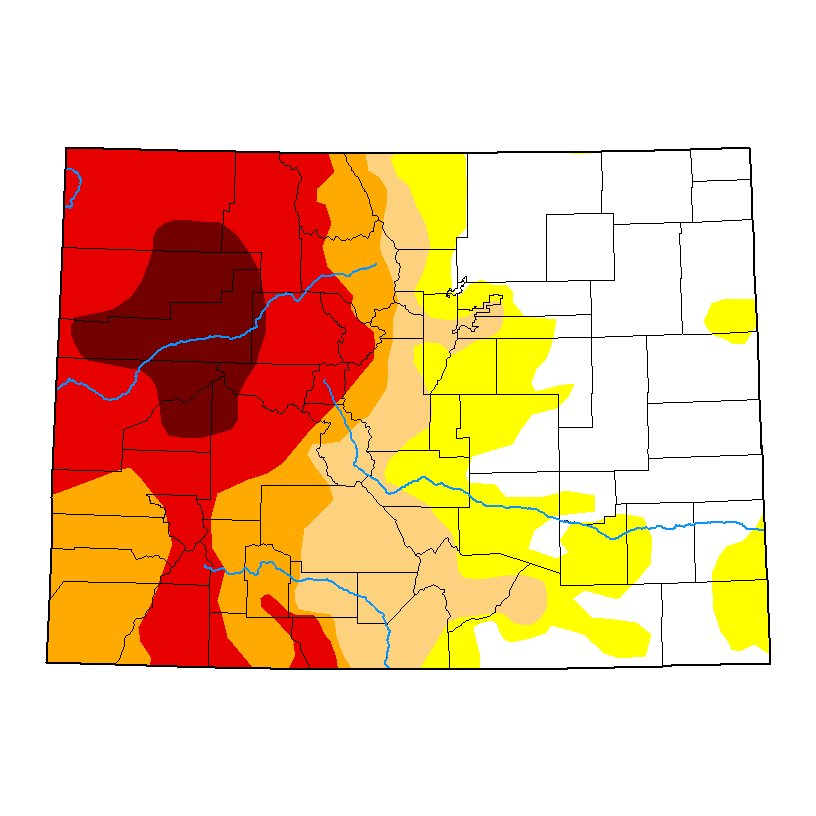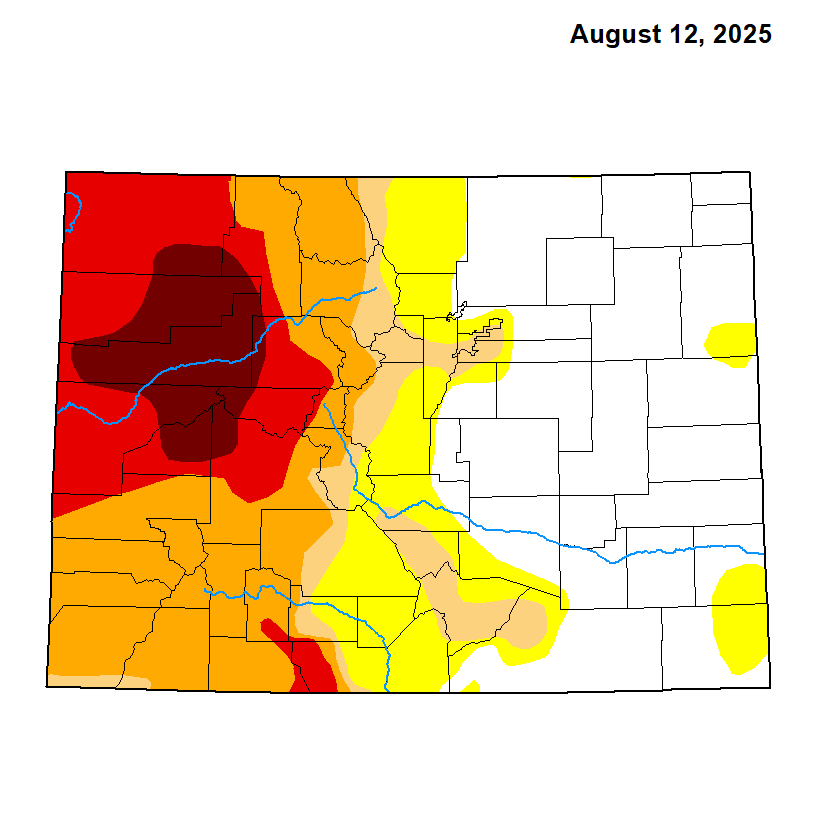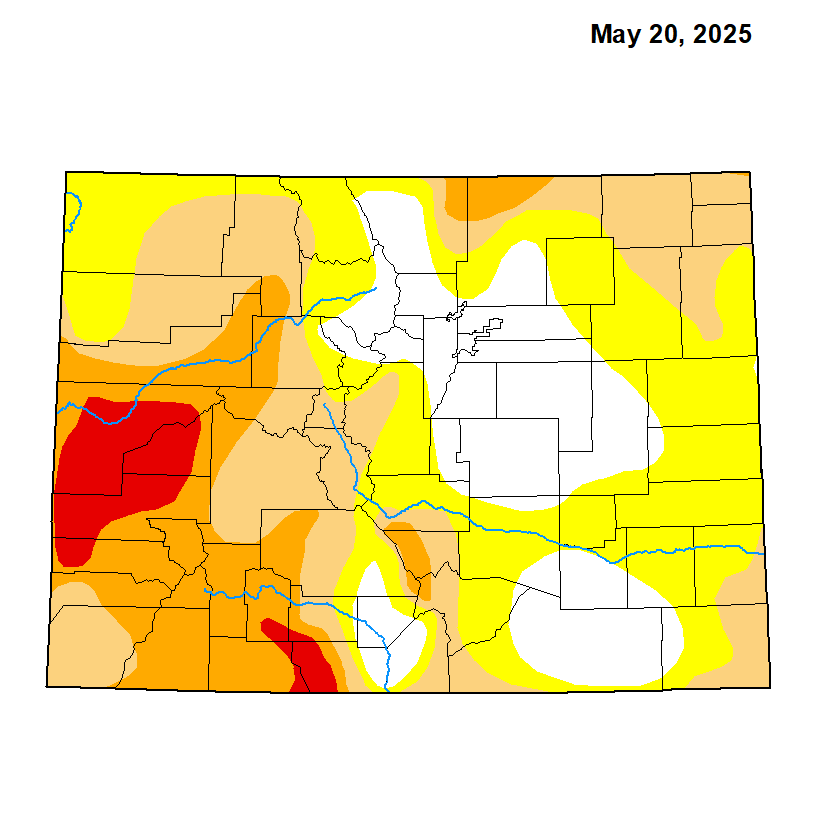You’d think the U.S. Drought Monitor was running a fever.
In the past few weeks, the Colorado map has gone from yellow and orange with patches of red to mostly red with maroon streaks, especially on the Western Slope, signaling a continued dry spell that ranks among one of the worst in recent history.
“Conditions were most concerning in Colorado and Wyoming, where persistent heat and limited rainfall drove drought deeper,” reads a drought report released Aug. 21. “In Colorado, drought expanded along the Front Range and southwest into northern New Mexico.”
Colorado has not been this dry since the fall of 2020 and early winter of 2021, when the three largest fires in state history scorched the High Country, and the devastating Marshall Fire burned thousands of homes on the Front Range between Christmas and New Year’s.
Conditions in Summit County show how this latest drought is spreading – and worsening – after weeks of historically low rainfall. (The official record-keeping station in Dillon shows 0.14 inches of rain this month, the lowest in more than 35 years.)

This week (as seen above) most of Summit is red, the color for “extreme drought,” meaning large fires erupt, more bugs appear, fish begin dying and livestock are threatened.
Last week (seen below) most of Summit was orange, the color for “severe drought,” meaning rivers shrink, grasses dry up and farmers limit watering. Compare it to this time last year, when 88% of Summit had no drought at all. Even three months ago, just before Memorial Day, more the half the county was doing just fine. The rest was abnormally dry, the lowest level of drought.

These bone-dry conditions are keeping authorities on their toes. Two recent vehicle fires on westbound I-70 above Silverthorne were extinguished before they could jump into the woods. Open fires and charcoal grills are outlawed for a third week. The local sheriff’s office levied heavy fines against a man caught smoking and shooting at a backcountry campsite.

Three months ago, the picture was quite different for all areas of the west slope, as seen above.
In western Eagle County, where drought is rated “exceptional,” the Derby Fire started as lightning-sparked embers over the weekend. By not it has burned over 1700 acres with no containment, singing cliffsides and meadows within sight of the Colorado River.

